There are three causes of toe walking that the doctor can determine during the examination:
1. Curvature of the foot
2. Twisting of the lower leg bones
3. Twisting of the femur.
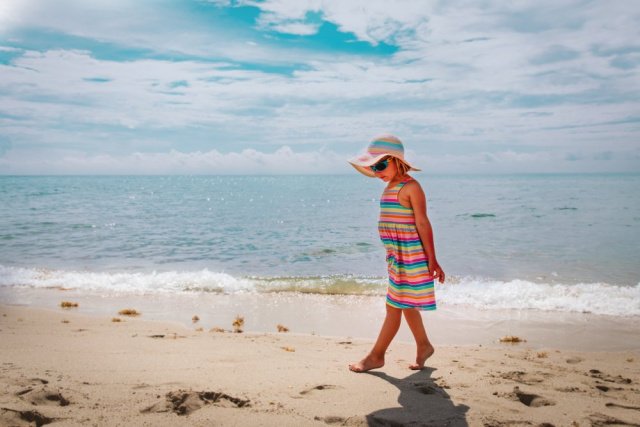
- The child walks on tiptoes
- Causes of toe walking in children
- flat feet
- Crooked feet (O-shaped and X-shaped feet)
- Toe walking in healthy children
- How you can help your child learn to walk properly
- When is it worth worrying?
- How can the leg muscles be effectively strengthened?
- Why does my baby walk on tiptoes?
- What should I do if my child constantly walks on their toes?
- Child development: Should gait be corrected?
- How to help your child: tips for parents
- When not to worry
- Neuromuscular disorders
- Why does your child start walking on their toes?
- How muscle hypertonicity affects the way a child walks
- Weight
- Body mass index (BMI)
The child walks on tiptoes
(Author's material - family portal 'All about children and the family': https://www.7ya.ru/article/Pochemu-rebenok-hodit-na-nosochkah/)
Your child is one year old, has just started walking and you've noticed that he mostly walks on his toes. Do you have to do something about it – or will it go away on its own? What situations can lead to tiptoe walking? How can you monitor your child's gait well? Let's get this sorted out before it's too late.

Of course, if a child takes one or two steps on tiptoes while walking, this is not a problem. Even if it's just written this way, it's a normal developmental step and no reason to panic. It becomes problematic when it spends half (or most) of the time in this position. It is very important to capture these moments.
There are two main categories of infants who walk on tiptoes.
The first of them. Physically healthy infants who may have mental disabilities (autistic traits, delayed psycho-emotional development).
The second. Children with neurological diseases such as: B. Cerebral palsy, which is characterized by muscle spasticity. With this condition, the child cannot sit on his heels even if you sit on his shoulders. The muscles are most tense and the person has no control over them.
Causes of toe walking in children
In addition to the categories of children who may be affected by this problem, there is also a classification of toe walking itself. There are a total of five types of this condition.
I mentioned the first category. 'emotional toe walking'. This is because toe walking in toddlers occurs at the height of emotions. For example, children with intellectual disabilities (particularly those with autism) literally 'fly away' when their emotions erupt. They start flapping their arms (like birds do their wings) and tapping on their toes.
When the state of emotional outburst outweighs other states, they begin tapping on their toes almost continuously. Simple emotional outbursts can develop into normal physical ups and downs in the child. This means that after a while it will no longer be able to land on its heels. It is physically pulled upwards until the toes transition into 'natural' gait.
The second category of tiptoes is what I refer to as those that occur in children with cerebral palsy. They suffer from, among other things Among other things, you suffer from severe spasticity of the calf muscles. And this was evident even before the child was on his feet. His toes were already in a straightened position when he couldn't walk.
Humans have the strongest and most powerful Achilles tendon (heel). When we stand on our feet and move, the Achilles tendon stretches. She has a certain range of movement.
If a child has muscle tension, he or she will not move their feet. This means that the Achilles tendon has no chance to stretch and is in a resting state. This means that even if the parent takes the child's foot in their hand and tries to move it, nothing happens. So it's no longer just about the muscles, but also about a shortening of the tendon itself. It prevents the muscles from stretching.
Another, third category. 'Valgus toes'. As a reminder, valgus causes the feet to look like an X and the heel is displaced outwards.
flat feet
Parents worry about flat feet, but... Flat feet are considered normal in most cases in newborns, older children, and adults. Special shoes, insoles, supinators and exercises do not help to increase the arch of the foot in mobile (physiological) flat feet.
Mobile flatfoot is a condition in which the arch of the foot is slightly reduced, the foot is flexible and strong, and has a good degree of joint movement.
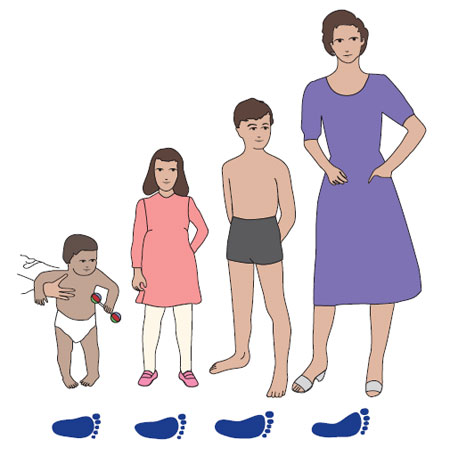

One in five children will have a flattened arch of the foot during their lifetime. Most adults with flexible flat feet have strong, pain-free feet.

Most children have a flattened longitudinal arch in their foot due to the increased joint mobility typical of childhood. When standing, the feet flatten and appear to 'turn' outwards.

The arch of the foot returns to its shape when the child sits down or leans on its toes.
Just like normal babies are different heights.

. Normal feet also have different heights.

Wearing orthoses and supinators for easy moving flat feet can cause discomfort for a child while walking
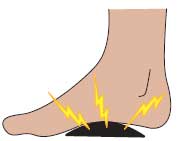
. and frankly it's a waste of money.
Your doctor will be concerned if you have flat feet:

stiff, severe pain.
However, an enlarged arch of the foot is even more worrisome because such feet can cause pain upon exertion in the future.
Crooked feet (O-shaped and X-shaped feet)
During normal growth, a child's feet can take on different shapes. When a child begins to walk, he or she often develops an O-shaped foot that straightens out again by the age of two. Some children develop X-shaped legs (called 'knocked knees' in English literature) between the ages of 1.5 and 2 years. The vast majority of X and O feet straighten spontaneously by age 5-6. Shoe insoles, special orthopedic shoes and exercises do not affect foot growth, but can cause discomfort and discomfort to the child.

Only a competent orthopedist can decide whether a child's feet are abnormal or not. The doctor may suspect pathology if the foot deformity is severe, predominates on one side, or if the curvature of the foot can be observed in other family members, especially if most of the close relatives have short stature.
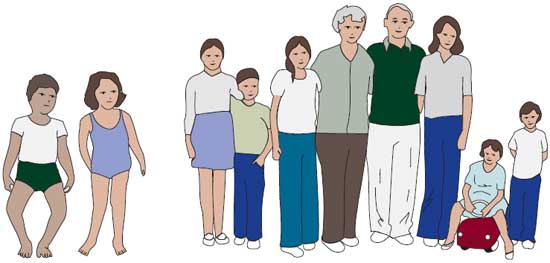
People who walk barefoot have the best feet! Your child needs soft, flexible shoes that offer him the greatest possible freedom for normal foot development.
It is better to choose shoes that are a little looser than too tight.

Stiff, 'orthopedic' shoes are not suitable for the feet because they restrict the movements necessary for the foot to develop strength and flexibility. Children's feet need to be protected from cold and sharp injuries, and they also need freedom of movement.
** (For a healthy foot – absolutely yes! And even better barefoot).
Falls can lead to injuries. A flat sole that doesn't stick to the floor or slip is best.
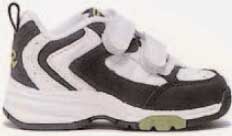
The material of the shoe should allow for maximum air circulation, which is especially important in hot climates.
Toe walking in healthy children
Gait in children is developed by the age of 2, and if a child rarely walks on tiptoes, there is no need to seek advice. The maturation of the neuromuscular system is a complex and lengthy process that lasts until the age of 2.5 years. If your child is still walking on their toes after this age, it is worth seeing a specialist, unless there are developmental abnormalities.
Only a pediatric orthopedist can diagnose a child's walking abnormality. Walking on tiptoes is normal and should not be a cause for concern if the child:
- is developing and has no obvious signs of developmental delay;
- occasionally walking on tiptoes;
- is able to stand on the toes or heel without feeling pain or discomfort in the foot area;
- is able to control his/her movements but shows no lack of coordination);
- is able to walk on tiptoes with both feet at the same time;
- gradually improves his motor skills according to his age-appropriate physiology.
However, if toe walking lasts more than six months and the child shows coordination and general developmental disorders, it is necessary to contact specialists: first of all, to the pediatrician, who will refer the child to a neurologist or orthopedist.
How you can help your child learn to walk properly
Our clinic has specialists who will make a diagnosis and prescribe rehabilitation therapy. Therapy can be comprehensive and include special exercises and foot massage. The massage relieves tension in the calf by improving blood flow. The physical exercises are selected by a specialist. A simple exercise is the squat. Squatting on the toes is problematic and the child must stand on the foot. Specific exercises to stretch the calf muscles and strengthen the forefoot muscles are also recommended.
Our clinic recommends that young children wear shoes with a stiff heel cap and an orthopedic insole. They also recommend correcting your gait in a timely manner. This is easy to do at a young age and the disease is hardly noticeable. Without correction, clumsiness (bear gait), leg curvature and flat feet can occur.
All images come from publicly available sources
When is it worth worrying?
The baby doesn't walk: what to do? This is a common complaint that young mothers turn to specialists with. However, in most cases there is nothing to worry about!
If your child is 15-16 months old, is actively crawling, but does not want to walk, it is time to see a specialist. A simple consultation at NeuroSpectrum Pediatric Speech Neurology and Rehabilitation Center can help you understand why your child is reluctant to walk and whether there is a neurological or orthopedic problem that needs treatment or if everything is normal.
If at 18 months or more the child has still not taken the first step, there is a pathology that needs to be corrected or treated.
How can the leg muscles be effectively strengthened?
The reason for the reluctance to climb can be a lack of muscle strength or hypertonicity. Targeted walking exercises will help relieve this problem, strengthen the child's muscles and improve coordination. Here are just a few useful exercises:
- Developing the ability to stand independently. Starting at around 9 months old, you can start teaching your baby to stand on their feet. To do this, place your child in front of you and gently rock them, supporting their hips. This rocking creates the desire to stretch your legs. It is important to observe whether the child pulls himself up independently or not. If this is not the case, it means that the muscles are not yet strong enough and you should not rush into anything.
- Support coordination. A very useful item to have at home with a six-month-old child is the fitball. A child who is already sitting securely can be placed on the fitball with his back to you, and you support him firmly at the hips and rock him gently. This exercise trains the musculoskeletal system and teaches you to control the movements of your own body.
- Teach your child to stand on a support. This type of exercise can be started when the child is already on his feet in the crib or on the sofa. It then makes sense to encourage the development of this skill by offering your child toys from a distance. For example, when he has to crawl to the sofa and get up to get an object that interests him.
- Walking with support. After 9 months, a child who can walk on the sofa can be taught to move around the room using a hoop or a special walker (not to be confused with the walker in which the child is placed).
- Learn to go over small obstacles. When the baby begins to walk at 9-11 months, it is important to teach him to gradually overcome various obstacles with his feet: stepping on doorsteps or toys in the room. This will avoid the risk of careless falls in the future.
Why does my baby walk on tiptoes?
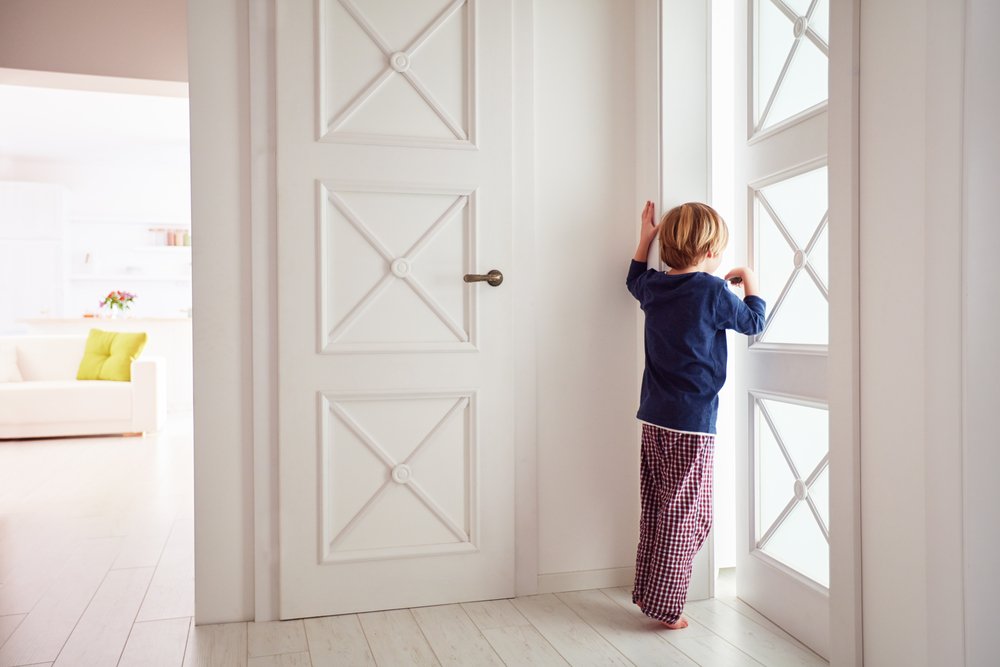
If you notice that your child is walking on their toes in a 'ballet-like' manner, you should not panic or pay attention, but take a closer look. Children can run this way if:
- They are just learning to walk - in the early stages almost all babies can walk on their toes.
- You have to pay attention to something that is high up.
- They experiment with their bodies and their gait.
- They are often placed in a walker where their feet cannot reach the ground and are taught to walk on their toes without supporting the entire foot.
- Because of hyperactivity: Different types of walking help release excess energy. We wrote about other symptoms of hyperactivity in babies in another article.
- He likes it better this way. This is usually due to a family member's increased attention during toe walking, and the baby changes his or her gait to attract this attention.
- Rarely, but it does happen: the child's shoes have an uncomfortable heel and it simply rubs against the foot.
However, if the child falls on their toes not just occasionally but regularly, it's worth taking a closer look. Such a walk can be an indication:
- Hypertonicity of the muscles due to neurological causes. This is most commonly caused by hypoxia before or during birth.
- Muscular dystonia. In healthy infants, it can be relieved by encouraging active movement and massaging the legs.
- Muscle spasticity, an early manifestation of cerebral palsy (infantile cerebral palsy).
Only a specialist can determine what the cause of toe walking is and whether something needs to be done.

Stretching the fingers while walking and walking on tiptoes can be a sign of a severe neurological abnormality with impaired muscle tone. However, it should be borne in mind that such diseases are manifested not only by a change in gait, but also by many other very noticeable symptoms.
What should I do if my child constantly walks on their toes?
Is treatment necessary if my child sometimes walks on their toes? This is what the doctors will tell you: first the pediatrician and then possibly the neurologist. Sometimes motor abnormalities resolve on their own, but parents should take measures at home so that the development of the foot structures is not disrupted by inappropriate walking. Here are tips that won't harm anyone - whether healthy toddlers who are heavy on their feet or those who walk like ballerinas.
- Swimming is a big help. In hypertension it relaxes muscle spasms and in dystonia it strengthens the muscles. In both cases it has a positive effect on the nervous system. You can swim in a swimming pool, but also in a normal bathtub at home. It is best to combine training in swimming classes with an evening swim before bed.
- For children who are very active, experts recommend physical exercise to expend excess energy. Go to a sports club with your child, go running or play ball outdoors more often.
- Give your child a play massage: it helps relieve muscle spasms, stimulates nerve endings and motor skills, and improves overall health. What can I use? Draw circles and figures on the foot with your fingers and then with a massage ball with rubber or plastic spikes; place the child on the exercise ball and move the ball slowly so that he has to move his feet and rests completely on them.
- Get massage mats - small mats with different surfaces, they stimulate the feet. You can make such mats yourself by filling sand or grit into fabric bags of different sizes.
- A good way to stop your child from tiptoeing (and prevent flat feet at the same time): let them walk barefoot. But not on the smooth parquet floor in the house, but outside - where it is clean and there is no glass or nails. And warm, of course. Gravel, sandy beaches, lawns in the countryside are ideal - anything where the surface is uneven and there is no risk of injury.
- The doctor may also recommend taking vitamin and mineral supplements, including calcium, magnesium, and B vitamins.
Child development: Should gait be corrected?
Walking on tiptoes is not a harmless symptom that can be dismissed. It is a serious sign that the child's development is not progressing completely normally. Such a gait in an infant is a sign of serious muscle contraction and possible limitation in the mobility of the cranial sutures. Furthermore, this reaction is not random. It just so happens that this type of walking is best for this child at this time. There is no point in correcting them artificially.
Some parents follow the recommendations of professionals and put their child in orthopedic shoes with a rigid sole, an insole and a shaft that fixes the foot and ankle. The child walks in such shoes from the first steps, both indoors and outdoors. The only problem is that the special shoes have no effect on the development of the child, that is, they eliminate the effects, but not the cause of the pathology. Wearing orthopedic shoes cannot affect the brain centers responsible for muscle tension. In addition, if the dura mater and suboccipital muscles are tense, orthopedic shoes can worsen the problem rather than solve it.
During birth trauma, the baby's muscles constantly receive nerve impulses from the brain, causing them to contract. This reaction is the only way to relieve tension along the entire posterior muscle chain. When the parents put the orthopedic shoes on the baby, the calf muscles contract and the nerve impulses continue to come. If the muscle is unable to respond and contract, it may eventually begin to break down. And it will be more difficult to repair.
There is an opinion that children 'grow out' of this pathology and after a while begin to walk normally, relying on the whole foot. This is actually very often the case, and visually it may seem as if the problem has gone away. However, this is not entirely true. After a while, the child will actually stand on their whole foot because their own weight is already squeezing and overwhelming the tense muscles. However, this can lead to other problems: in the future, the child, and later the adult, will quickly tire the calf muscles and will experience some pain when massaging this area. Walking becomes difficult and after a while the muscles can even atrophy. In general, if the problem is not solved, it will not go away.
How to help your child: tips for parents

If your child only walks on their toes, you should first see a specialist. First and foremost, this is a neurologist. In some cases, it makes sense to consult an osteopath who can help restore the correct alignment of the skull bones and ensure blood supply to the subcortical centers of the brain. The doctor will also help relax the muscles in the neck and relieve pressure on the dura.
This is best done in conjunction with massage sessions. Treatment should begin as early as possible because the smaller the child, the easier it is to restore the position of the skull bones as long as the injury has not yet 'fused' with the body.
If it is not possible to take the child to an osteopath, a chiropractor can be consulted. In this case, the use of so-called 'trust' techniques (quick and selective manipulation), which can cause crunching and cracking of the joints, should be avoided.
Children with this condition can benefit from swimming lessons and physical therapy exercises. Swimming is a sport that almost everyone can do. Swimming exercises distribute the load evenly across the entire body, strengthen the muscles and relieve excessive tension.
Walking barefoot on uneven surfaces has good results. In summer your child can run on the lawn in the garden shed or on stones on the beach, and in winter on a massage mat at home.
It is important to know that gait problems do not disappear immediately, even if the osteopathic doctor does a good job, in combination with massage. Initially, the child will only occasionally stand on one full foot. As the muscles relax, this will happen more and more often, and eventually the child's gait will be completely normal.
When not to worry
Before the age of 5, children often walk on their toes because they want to gain new experiences or appear taller. Your child may become overconfident and start walking regularly, but there are no abnormalities. The most important thing is that the child stands normally and walks on level feet most of the time, then there will be no problems. Children also tiptoe on uneven surfaces or when they want to reach a tall object.
Over time, the enthusiasm for tiptoe walking disappears and the children learn something new. Parents begin to realize that experimentation is natural. Of course, the parents themselves did something similar as children, but they no longer remember it. Walking on tiptoes is normal as long as there are no accompanying symptoms of neurological or muscular disorders.
Neuromuscular disorders
If walking on tiptoes is one of the symptoms, one should be particularly careful and consult a specialist if the underlying neuromuscular disorders are:
- impairment of motor coordination;
- delayed speech and/or intellectual development;
- autism spectrum disorders;
- Sleep disorders;
- Drowsiness or increased activity.
- Increased tension in various muscle groups;
- impairment of the gait pattern;
- Deformities of the feet and Achilles tendon.
Such disorders require treatment. Parents who did not consult a neurologist in a timely manner may find that their child's motor impairment has not changed. Even at an older age - after the age of 5 - it did not stop walking on tiptoes.
Muscular disorders usually occur as a result of negative effects on brain structures during pregnancy and childbirth. They can also occur after illnesses or vaccinations. If it is a pathology, it is difficult not to notice it. Parents who notice that their child is walking on their toes should check the condition of the feet and Achilles tendons and pay attention to their gait. If your child walks on tiptoes, this is completely normal and there are no signs of pathology.
Why does your child start walking on their toes?
When babies take their first steps, some parents ask themselves, 'Why is my baby making toes? Does it make you feel good or is it a sign of a neurological disease?'. Ksenia Batrak, pediatrician at the SM Clinic in St. Petersburg, explains:
'In most cases, tiptoe walking is actually considered normal. This peculiarity is quite common in children and usually disappears spontaneously. What could be the cause of tiptoe walking? The fact is that some children find it easier to walk this way: infants' muscle groups develop unevenly.
When a child learns to take their first steps, the body distributes the load between the stronger ankle and thigh muscles and the less developed foot muscles. In this case, the habit of tiptoeing disappears once the foot is strong enough.
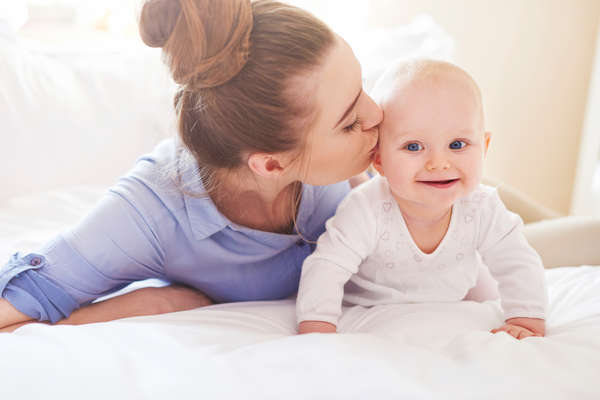
In other infants, this gait persists until the nervous system has finally coordinated with the muscles of the body. Sometimes the tendency to tiptoe walking arises from simple curiosity (“I can still walk like that!”) or for psychological reasons. For example, the child subconsciously wants to demonstrate his importance in the family or, on the contrary, wants to attract as little attention to himself as possible.
How muscle hypertonicity affects the way a child walks
As Natalia Konshina, neurologist and epileptologist at the Prognosis Pediatric Neurology Clinic, explains, one of the most common causes of toe walking is increased muscle tension in the lower limbs and abnormal neuronal regulation.
'If a child walks on tiptoes, this is a reason to see a neurologist and assess muscle tone. The doctor checks for abnormal reflexes, tendon reflexes, asymmetry, checks for different changes in tone depending on the position of the body and tells you what these are due to.
And it is better not to postpone the visit to the neurologist - the sooner you start correcting the disorder, the less likely it is to become entrenched and the easier it is to normalize it.
If the tone lasts for a long time and the child has to walk on tiptoes when walking, it may even happen that medication and massage no longer help and one has to resort to Botox therapy or surgical treatment by neurosurgeons and orthopedists,' warns the doctor . – warns the doctor.
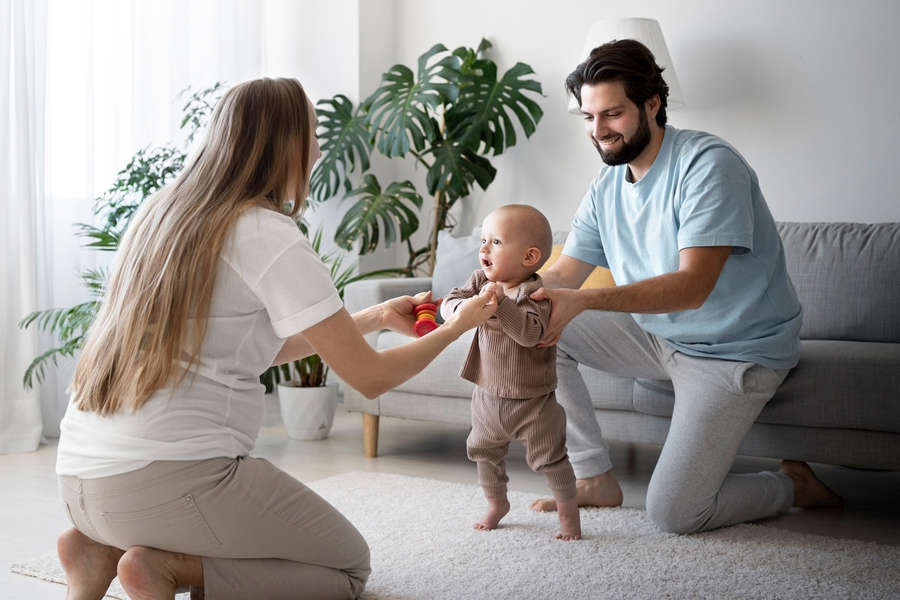
Weight
To measure the weight, the baby's outer clothing must be removed. Wet diapers, clothes and jeans can weigh more than 0.5 kg. Infants should be weighed naked (a blanket can be wrapped around the baby before weighing to prevent him from getting cold). Older children take off everything except their underwear.
There are weight norms for each age, but they are not always correct because they do not take into account the child's height, which may be higher or lower than the norm. Body mass index (BMI) analysis should be used for appropriate assessment.
The classification of the results ranges from extremely underweight to severely overweight.
Body mass index (BMI)
BMI provides a more comprehensive assessment as it shows how a child's height and weight harmonize and indicates proportions.
This indicator allows you to objectively assess the situation and determine whether a child has a weight problem.
BMI is calculated as follows: body weight in kg ÷ square of height/body length in meters (measured in kg/m²).
BMI norms depend on the age of the child and differ significantly from those for adults included in our calculator. Results range from severe malnutrition to obesity.
In case of underweight Specialist advice should be sought and the diet adjusted.
A high body mass index is often hereditary: if one parent is overweight, the probability that the child will be overweight is 40 % higher. If both parents are diagnosed with obesity, the probability increases to 70 %.
According to the WHO, the main cause of obesity and overweight is energy imbalance, that is, consuming calories in excess of the body's needs. Increased consumption of energy- and fat-rich foods as well as reduced physical activity (including sitting for long periods) contribute to this problem.
An increased BMI increases the risk of many non-communicable diseases, from cardiovascular and musculoskeletal diseases to certain types of cancer. Overweight children suffer from shortness of breath and are at increased risk of bone fractures. They often have psychological problems and develop complexes.
Overweight and obesity can often be avoided through a healthy diet and more physical activity. These activities also serve to prevent such disorders.
Anyone who is overweight can improve their health by:
Read more:- Causes of tiptoe walking in babies.
- Toe movement in children.
- Tiptoe walking.
- A person walks on tiptoe.
- Tiptoe as an adult.
- Tiptoe walking.
- Child walking with clubfoot aged 2 years.
- A child begins to have clubfoot between the ages of 1 and 5.
